Books and Flip-Flops, Flip-Flops and Books
Portraying the trend as something relatively new (by the way, we hear newspaper readership may be down), the New York Times looks at sales of books in nontraditional outlets, particularly at a time when Borders is closing 200 stores and Barnes & Noble is emphasizing e-books, e-readers and games and educational toys.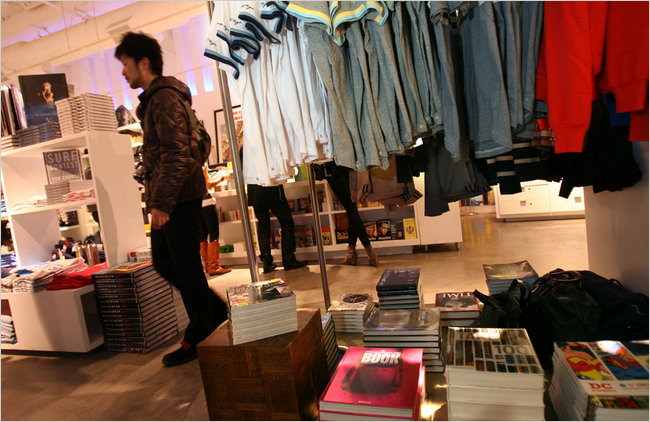 One example of a hot new spot for books: Kitson, which has boutiques in Los Angeles and sold 100,000 books last year, double what it sold in 2009. In addition, the Times wrote, "The fashion designer Marc Jacobs opened Bookmarc in Manhattan in the fall. Anthropologie has increased the number of titles it carries to 125, up from 25 in 2003. Coldwater Creek, Lowe's, Bass Pro Shops and even Cracker Barrel are adding new books. Some mass retailers, too, are diversifying--Target, for instance, is moving away from male-centered best sellers and adding more women's and children's titles this year." And at Sam's Clubs, "more children's books and cookbooks have been added lately."
One example of a hot new spot for books: Kitson, which has boutiques in Los Angeles and sold 100,000 books last year, double what it sold in 2009. In addition, the Times wrote, "The fashion designer Marc Jacobs opened Bookmarc in Manhattan in the fall. Anthropologie has increased the number of titles it carries to 125, up from 25 in 2003. Coldwater Creek, Lowe's, Bass Pro Shops and even Cracker Barrel are adding new books. Some mass retailers, too, are diversifying--Target, for instance, is moving away from male-centered best sellers and adding more women's and children's titles this year." And at Sam's Clubs, "more children's books and cookbooks have been added lately."
Although they are hit or miss and often take a lot of effort, sales to such outlets are attractive to publishers for a variety of reasons. Chief among them: they can result in huge sales for the accepted titles and those sales are nonreturnable.
David Steinberger of Perseus Books Group put the matter in perspective, saying, "The national bookstore chain has peaked as a sales channel, and the growth is not going to come from there. But it doesn't mean that all brick-and-mortar stores are cutting back."
At the same time that non-book retailers stock up on books, many booksellers are stocking up on all kinds of other products. Case in point: Vroman's, Pasadena, Calif. Allison Hill, the bookstore's president, told the San Gabriel Valley Tribune: "We're always changing the product mix. We have to. We started selling appliances this Christmas. Rice cookers! Tea kettles! There were some booksellers who thought we were crazy. But they sold! Right next to the cookbooks. It's people who are buying gifts for college students."
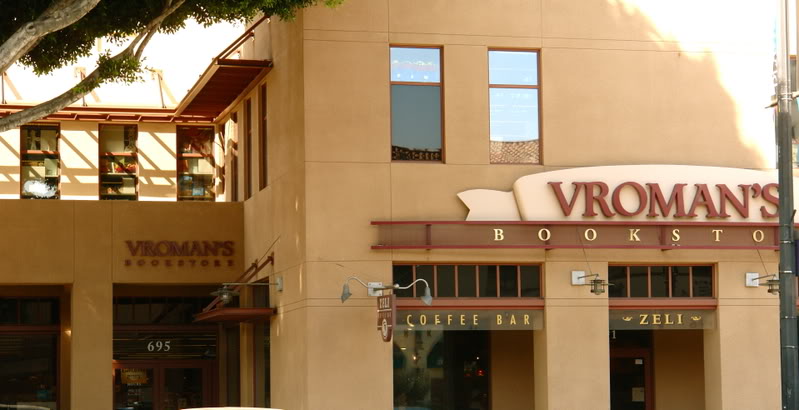 "This business has never been high-profit, even for the Barnes & Nobles of this world," Vroman's owner Joel Sheldon told the Valley Tribune as he highlighted the pressures on traditional bookstores.
"The difference today is that just 20 years ago the only places you
could go to find information were your bookstore and the library. People
had to come to us. We didn't ever think of it that way at all. If you
think of the ways people get information today, it's just radically
different."
"This business has never been high-profit, even for the Barnes & Nobles of this world," Vroman's owner Joel Sheldon told the Valley Tribune as he highlighted the pressures on traditional bookstores.
"The difference today is that just 20 years ago the only places you
could go to find information were your bookstore and the library. People
had to come to us. We didn't ever think of it that way at all. If you
think of the ways people get information today, it's just radically
different."Sheldon and Hill also spoke about Vroman's future with the Pasadena Star-News, which noted that the store has always diversified. "Just 68% of Vroman's business is books--and for the last half-century, the ratio has been more like 60/40. Last year, I visited with Allison in the store, and joked, 'Hey, you're selling flip-flops in here!' Those flip-flops,' she replied, 'are what makes it possible for us to sell you books.' "



SHELFAWARENESS.1222.S1.BESTADSWEBINAR.gif)


SHELFAWARENESS.1222.T1.BESTADSWEBINAR.gif)
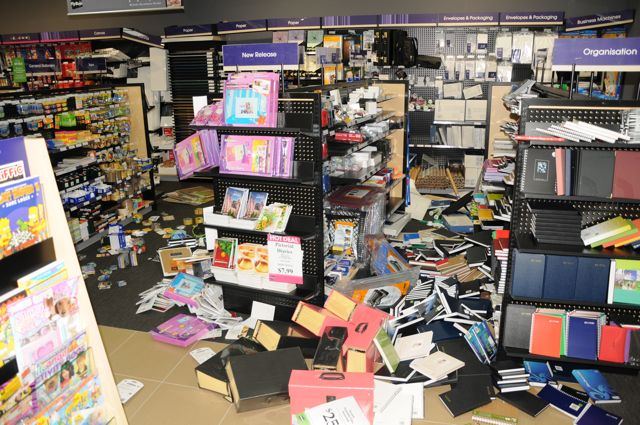
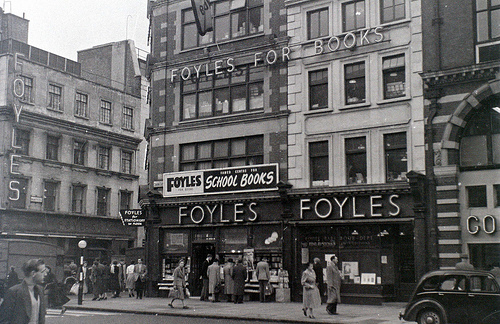 The legendary Foyles bookshop in London is moving next door on Charing Cross Road into a building recently bought by members of the Foyle family, according to the
The legendary Foyles bookshop in London is moving next door on Charing Cross Road into a building recently bought by members of the Foyle family, according to the 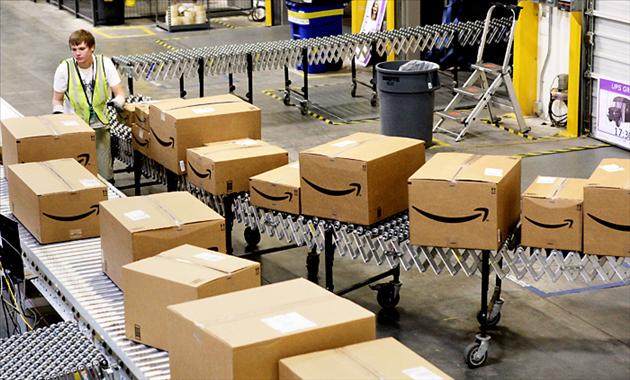 Amazon's
proposed $139.1 million distribution facilities in Southeast Tennessee
came under fire from critics who contend that "the tax giveaways to
Amazon could be nearly as much as the company will pay the 1,476 workers
it plans to hire this year in Hamilton and Bradley counties," according
to the
Amazon's
proposed $139.1 million distribution facilities in Southeast Tennessee
came under fire from critics who contend that "the tax giveaways to
Amazon could be nearly as much as the company will pay the 1,476 workers
it plans to hire this year in Hamilton and Bradley counties," according
to the 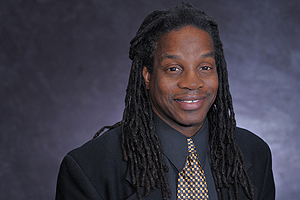 Congratulations to Clarence Lusane, author of The Black History of the White House (City Lights), who will speak today with White House staff members "about the many generations of black servants who preceded them," as the
Congratulations to Clarence Lusane, author of The Black History of the White House (City Lights), who will speak today with White House staff members "about the many generations of black servants who preceded them," as the  Cool idea of the day: Strand Books, New York City, has created Curated Collections: a selection of must-reads by authors and artists that are featured in the store and
Cool idea of the day: Strand Books, New York City, has created Curated Collections: a selection of must-reads by authors and artists that are featured in the store and 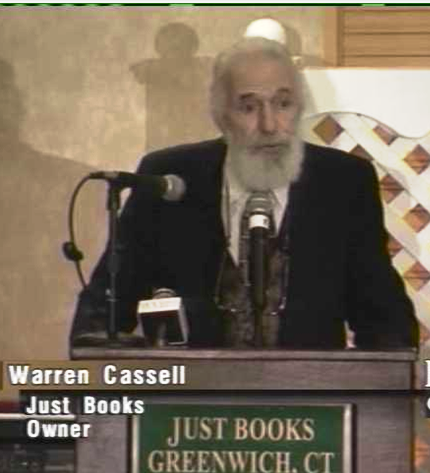 Cassell sold Just Books in 2002, and he and his wife retired to Portland, Ore., to be near family. But typically, he did not retire in the general sense of the word: among other things, he worked part-time at Broadway Books, started a memoir and recently became involved with
Cassell sold Just Books in 2002, and he and his wife retired to Portland, Ore., to be near family. But typically, he did not retire in the general sense of the word: among other things, he worked part-time at Broadway Books, started a memoir and recently became involved with 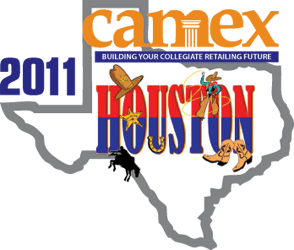 College booksellers are gathered in Houston, Tex., for the National Association of College Stores's CAMEX trade show, which began last week with several days of education and events. The trade show opened yesterday.
College booksellers are gathered in Houston, Tex., for the National Association of College Stores's CAMEX trade show, which began last week with several days of education and events. The trade show opened yesterday. While The King's Speech, which took many of the top Oscars last night, is based on an original screenplay, The King's Speech: How One Man Saved the British Monarchy by Mark Logue and Peter Conradi (Sterling) is a striking consort. Logue is the grandson of Lionel Logue, the speech therapist who worked with King George VI on his stutter--which is the focus of the movie. Geoffrey Rush plays Logue in the movie and was nominated for best supporting actor.
While The King's Speech, which took many of the top Oscars last night, is based on an original screenplay, The King's Speech: How One Man Saved the British Monarchy by Mark Logue and Peter Conradi (Sterling) is a striking consort. Logue is the grandson of Lionel Logue, the speech therapist who worked with King George VI on his stutter--which is the focus of the movie. Geoffrey Rush plays Logue in the movie and was nominated for best supporting actor. Russell Hornsby (Lincoln Heights) and Bitsie Tulloch (Quarterlife) have joined the cast of NBC's drama pilot Grimm, a fanciful spin on Grimm's Fairy Tales that "revolves around Nick (David Giuntoli), a cop who starts to see some humans for what they actually are--animals/beasts--and realizes it’s his destiny to protect society from them,"
Russell Hornsby (Lincoln Heights) and Bitsie Tulloch (Quarterlife) have joined the cast of NBC's drama pilot Grimm, a fanciful spin on Grimm's Fairy Tales that "revolves around Nick (David Giuntoli), a cop who starts to see some humans for what they actually are--animals/beasts--and realizes it’s his destiny to protect society from them," 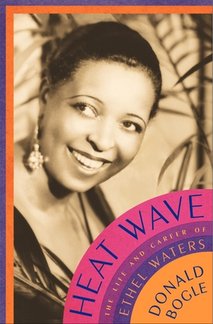 Ethel Waters was famous almost from the moment she sang on stage professionally for the first time in 1917 for her exuberant performing persona: laughing and smiling, warm, sexy and sassy. She interpreted songs from the 1920s onward with such flair that songwriters courted her to introduce their material; she established classics like "Stormy Weather," "Am I Blue?" and "Heat Wave." Audiences were crazy about her "hot-cool style," and she sold records by the thousands, not only in the "race music" market but in the mainstream.
Ethel Waters was famous almost from the moment she sang on stage professionally for the first time in 1917 for her exuberant performing persona: laughing and smiling, warm, sexy and sassy. She interpreted songs from the 1920s onward with such flair that songwriters courted her to introduce their material; she established classics like "Stormy Weather," "Am I Blue?" and "Heat Wave." Audiences were crazy about her "hot-cool style," and she sold records by the thousands, not only in the "race music" market but in the mainstream.